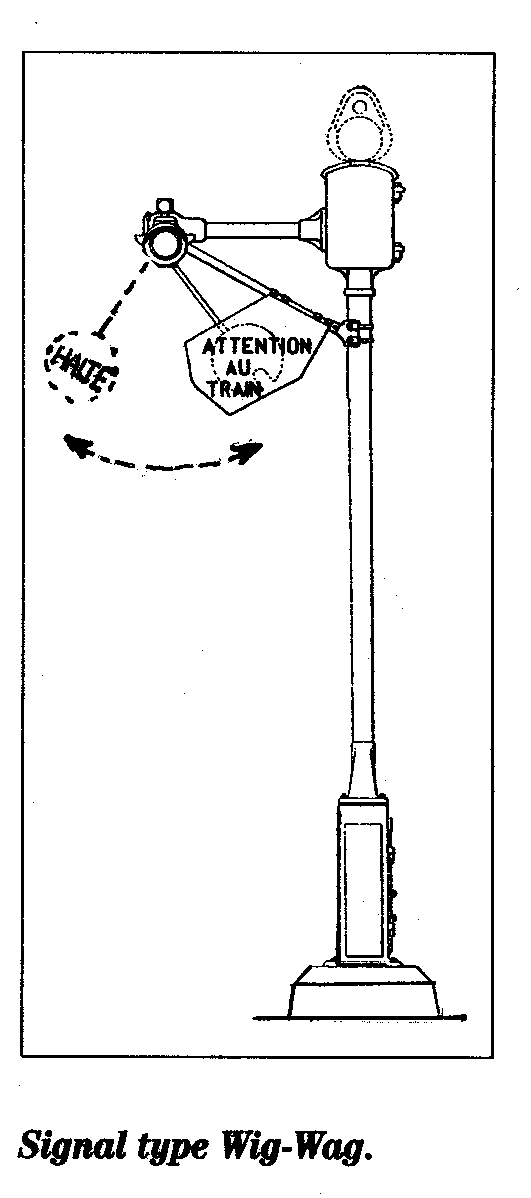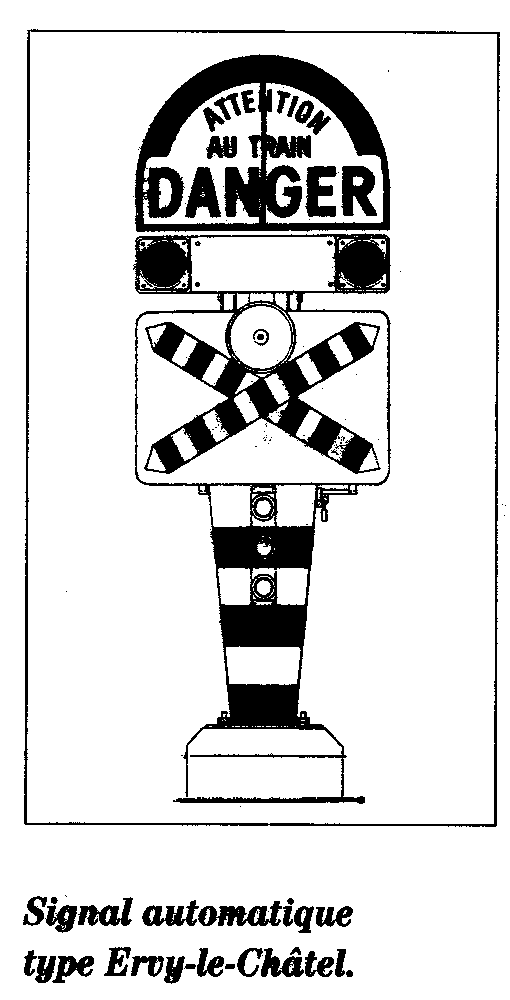| Joined to this mail are two drawings, one about French
wig wags the other one about a purely French invention, not like a wig
wag, not like a Griswold. About the real wig wags I will make further investigation
of their exact placements (those as illustrated in drawing wig wag France1).
This which you find under Wig WagFrance2 is probably a French speciality.
It is called "Signal Automatique Ervy.le-Châtel" (automatic signal
Ervy-le-Chatel-type). It was first installed and tested at the grade-crossing
359 on the Busseau-sur-Creuse - Ussel secondary SNCF line in Soth-Central
France West of Clermont-Ferrand in 1947 (not at Ervy-le-Châtel!).
The intention of SNCF was to reduce the very high number of manually operated
gates. The speciality of this equipment was that it had a moveable part.
On the top the half-round banner with the indication "Attention au train
DANGER" was of two parts. In the normal position, when no train was expected
this displayed just the warning notice and the flashing lights have been
dark. When a train was approaching the flashers began to light on, the
bell in the middle was ringing and the two parts of the banner on the top
have commenced clapping open and closed (like as clapping hands). The ministerial
aprouving of this equipment was in 1948 and it was described as as a train
announcing installation comprising a half-round mouveable banner of two
halves displaying the words "Attention au Train Danger". Two flashing lights
and a very loud bell! The second such equipment was really installed near
Ervy-le-Châtel station on the secondary Troyes - Saint Florentin-Vergigny
line a bit more than 50 miles Soth-East of Paris. This time the banner
was in one part, but rotating with a motor of the Mors type (later also
by a Thomson type motor). from now on this type was called "Signalisation
routière automatique" (Automatic road signalisation). In 1951 3
grade-crossings have got this new type of signalisation. Then within 3
years 400 to 500 grade crossings got this equipment, but from 1955 on all
have been converted to automatic half-barriers and common flashing lights
as still in use in France, so none of this have ever survived into our
days.
Concerning wig wags, they have first arrived from the
United States in 1925 when some secondary, they privatley or publicly owned
railroads of lesser importance commenced to equip important grade crossings
with a new type of signalisation. The Compagnie Générale
de Signalisation (General Signalisation Company) imported some wig wags
from Westinghouse in the USA. The following wig wags have been then installed
(in 1925 to 1928) :
The information about France are from the book "Histoire de la Signalisation Ferroviaire Française", by Alain Gernigon, published by La Vie du Rail, Paris 1999. Samual Rachdi |


Express Menu
8/18/02